Archive for the ‘freight forwarder’ Category
By: Pakarada Premtitikul
General Manager
InterDry (Thailand) Co., Ltd.
A study on a few typical shipments and the effect on Temperature and Relative Humidity.
Let’s have a look at three commonly used shipping routes and what this does to the temperature and humidity inside the shipping container.
We’ve chosen three routes, namely Japan – Netherlands, Japan – Memphis and Japan – Portland.

Typical Conditions
A normal shipment consists of three distinct stages. The first stage includes the time from container filling until the container is loaded onto a ship. This includes road transportation and brief periods of storage. Daily cycles of temperature and humidity are common. For example, figure 2 includes temperature swings of 40° F [22°C] during the first stage of a shipment from Japan to The Netherlands.
The second stage is the actual time at sea or aboard a ship. This may or may not be the longest stage during the container’s journey. During this stage, daily cycles of temperature and humidity are usually very minor or completely non-existent. Temperature changes are gradual, often occurring over days rather than hours. Occasionally, a single temperature/ humidity cycle occurs as the ship makes stops along the route, however extreme conditions are rare. Figure 3 includes a slow temperature rise and fall as a winter route takes the ship near the equator and then north to The Netherlands.
The final stage begins when the container is removed from the ship and continues until the recorder is removed during the freight unloading process. This may include varying periods of time spent in customs, on trains, on trucks, and in storage. Daily temperature and humidity cycles are common and may be extreme.
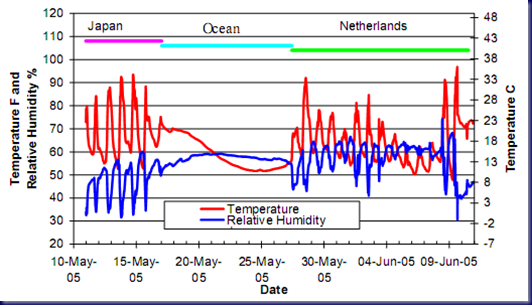
Typical summer shipment – Japan to the Netherlands
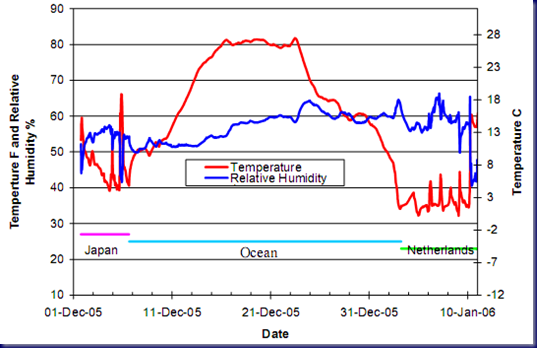
Typical winter shipment – Japan to the Netherlands
Extreme Conditions:
Some of the most interesting recordings are the extreme conditions. The highest recorded temperature occurred on July 25, 2005 during a shipment from Japan to Memphis. The temperature reached 135° F [57° C] during the third stage of this shipment (figure 7).
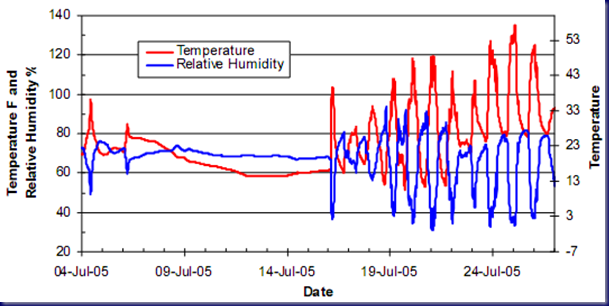
Hottest shipment 135°F (57°C) – Japan to Memphis (USA).
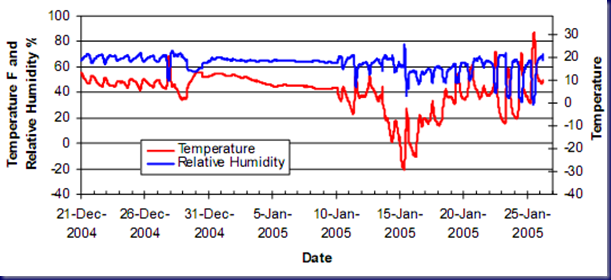
Coldest shipment -21°F (-29° C) – Japan to Memphis (USA).
The lowest recorded temperature occurred on January 15, 2005 also along the Japan to Memphis route (figure 8). The temperature dropped to -21° F [-29° C], which is slightly beyond the recorder’s published temperature range.
The shipment with the highest relative humidity occurred during a trip from Japan to Portland. The relative humidity was recorded at 96% on August 5, 2005 while the container was on land. Figure 6 shows the detailed temperature and humidity profile. The most extreme humidity conditions are seen during periods of large daily temperature changes. In this example, as the temperature slowly drops from 88° F [31° C] to 67° F [19° C] over 9 days, the humidity increases to 88% before returning to 79%. However, starting on August 4 as the temperature dropped from 121° F [49° C] to 68° F [20° C] over a 16 hour period, the relative humidity rose from 32% to 96%. The corrugated boxes seem to absorb moisture fast enough to temper humidity during slow changes in temperature while at sea. However, rapid temperature changes seen on land seem to exceed the rate at which the corrugated boxes can absorb moisture.
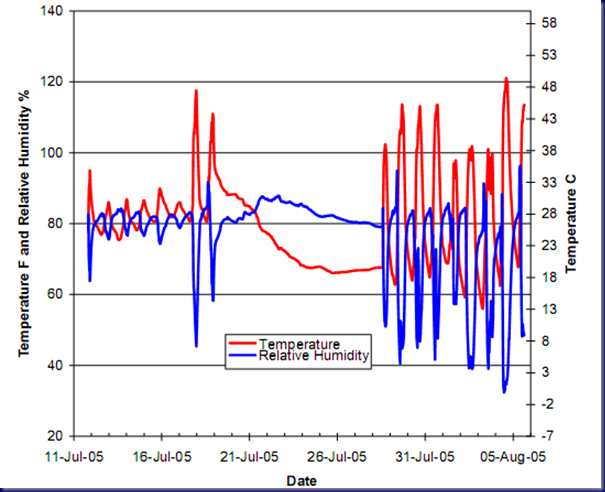
Highest relative humidity 96% – Japan to Portland (USA).
Be sure to check out the following page for more information on how desiccants can save your valuable cargo:
InterDry Thailand
By: Pakarada Premtitikul
General Manager
InterDry (Thailand) Co., Ltd.
Does the colour of a shipping container affect the relative humidity inside?
Steel is currently the most used in the construction of containers despite its poor insulation properties. This is because it is cheap in production and maintenance. Another factor is that it is very suitable to absorb the mechanical forces acting on a container. The colour of the paint on the exterior of the container has an impact on the internal container temperature during sunlight. For a better picture of the impact on the container I will show you two colour charts reflecting the temperature changes in a white and a brown container during the course of one day.
The chart below shows the temperature in different places within a white container and outside each hour of the day. The temperature varies between 40 ° C near the roof and 28 ° C near the floor with an outside temperature of about 28 ° C at noon. During the night, the temperature of the air in the container is about 12 ° C at an outside temperature of 15 ° C.
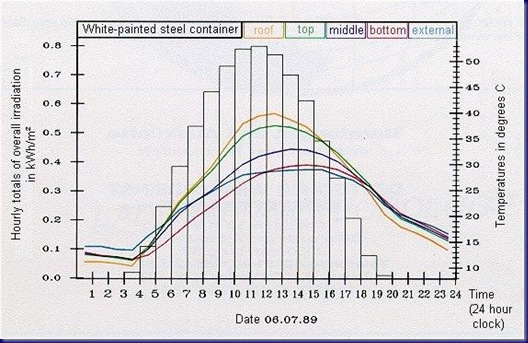
Figure 1: The temperature at different places in a white container at every hour of the day.
A similar study was done with a container with a brown color. There were much higher temperature differences measured. A measurement at midday found a temperature of about 50 ° C near the roof and 35 ° C near the container floor with an outside temperature of 25 ° C.
During the night the air inside and outside the container had similar temperatures, fluctuating around 15 ° C. These measurements are in the chart below
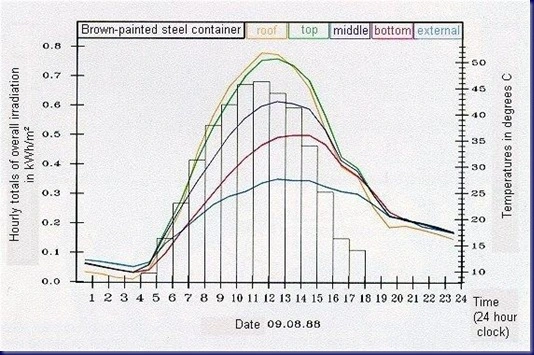
Figure 2: The temperature at different places in a brown container at every hour of the day.
The colour of a container indeed affects the internal temperature. Previous charts showed that a dark container has a temperature increase of about 10 ° C more with the same outdoor temperature (27 to 28 ° C). The relative humidity can change from 80% for example to about 50% which can cause a great hygroscopic imbalance. It also comes with a larger cooling. All the humidity extracted from the goods into the container internal air to balance the hygroscopic imbalance due to the temperature rise in the afternoon will condensate during the drastic drop in temperature in the evening.
The figure below shows an estimate of the occurrence of certain container colour. This estimate resulted from the assumption that the size of the container capacity of 10 major container liners is approximately equivalent to the size of the total number of containers that are transported. And that the container liners only transport using their own containers. Even though bright colours like white, gray and yellow are popular, darker colours like dark blue and even green are also relatively common.
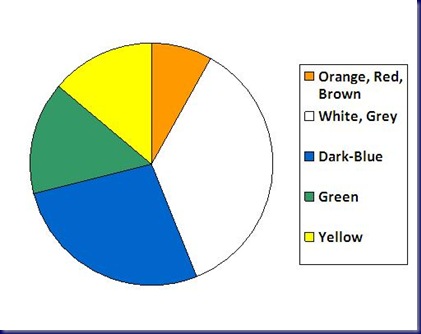
Figure 3: Percentage of container colour occurrence.
http://bit.ly/99j2NX
1. What is Relative Humidity (RH)? Relative humidity measures the amount of moisture in the air. It is expressed in a percentage of how much moisture the air could possibly hold. The wetter or damper the air is, the higher the relative humidity. The drier the air feels, the lower the relative humidity. Thus, 100% humidity is actually rain.
2. When stuffing a container in any climate, you also stuff the actual humidity contained in the air at the place of packing.
3. When closing the container, the humidity is contained in a very small space. As the container is moved from one climate to another, the humidity vaporizes up into the ceiling of the container, where it will start to rain down onto the cargo. Either the humidity will start to soak into the cargo or run along the surface of i e steel products. It can also turn into water that runs towards the bottom of the container. Nordic Power Desiccant actually "catches" the moisture before it vaporizes.
4. As soon as the climate changes, the moisture will either vaporize again or really start making trouble among your different products being shipped, if you do not use a desiccant. The longer the transportation time – the more damage may possibly develop.
5. You may have seen your cargo being loaded in perfect condition. But have you ever opened a container full of moulded furniture? Or rusty motor equipment? Or rice sacks full of mildew? Or fruit covered in fungus? The customers do not like it. They will blame you. They will lose money and time, they will lose their customers and they will make claims to you. Then you will lose money and time, and possibly even the client. Since there are many parties along the transportation chain, many may be blamed for damaged goods – like manufacturers, traders, shipping lines and forwarders. Why be among them?
6. Other desiccants being used are i.e. silica gel. Silica gel is the most common type of desiccant in use today. It is a porous sand and can absorb moisture in the air, often up to 40 % of it´s weight. However, silica gel absorbs moisture best in small, confined spaces and often end up getting saturated in a very short time span, making it unsuitable for container shipments. When saturated, it will not help catching the moisture anymore. Be aware that some silica gel – the blue contains cobalt – is toxic, and can not be disposed of any which way.
7. The best insurance there is – using Nordic Power Desiccants. The effect is 40 – 60 % better than other products in the market.
Leak Proof Our desiccants are packed in special Tyvek and Spunbond packing that allows only one way absorption, thus ensuring the desiccants are completely leak proof and efficient too.














